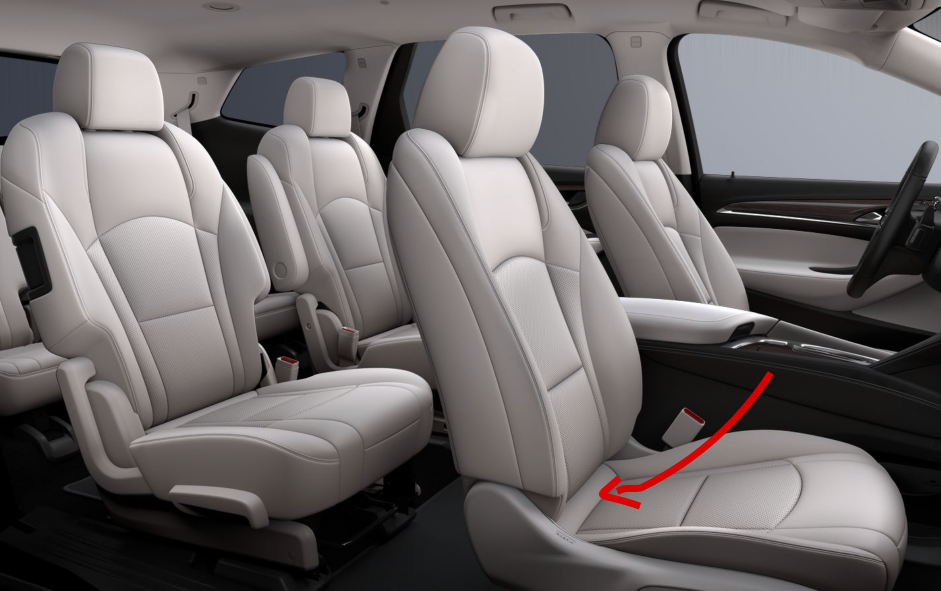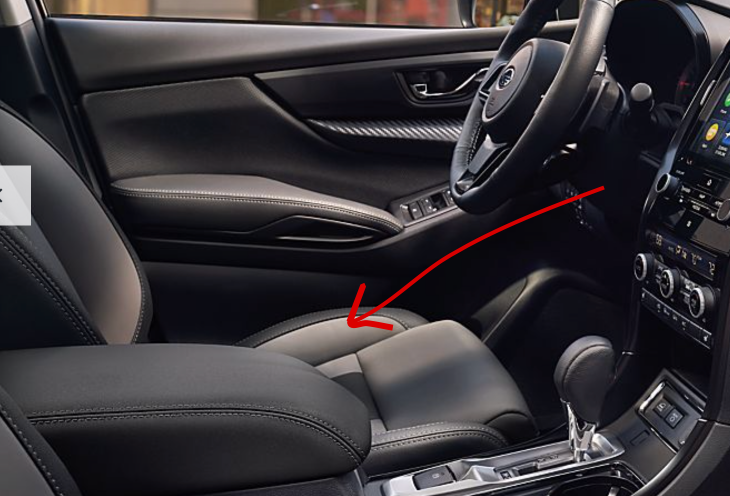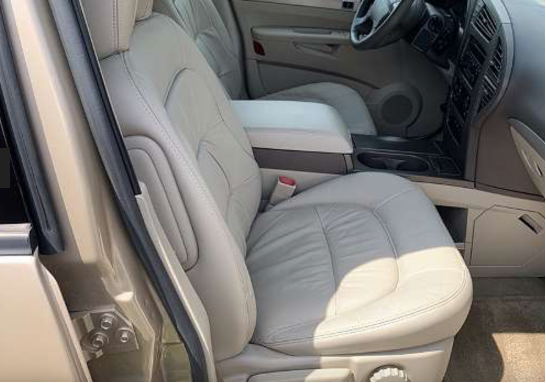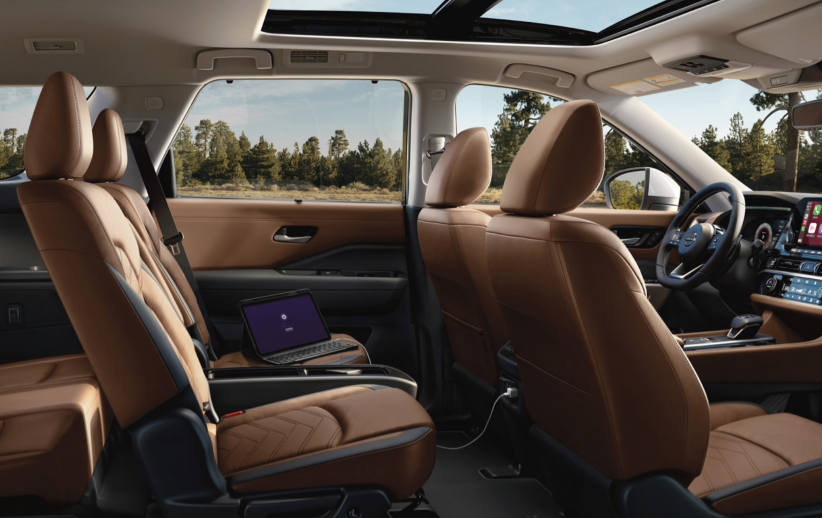When you struggle with pelvic pain, it’s a lot easier to stay at home. Driving is a notorious trigger for bladder and pelvic pain. From a bumpy ride to hard seats, finding the right car takes time and effort. This article contains tips that I hope will help ease your car rides and bring some joy back to taking a weekend drive with family and friends.
Pelvic Pain Complicates Driving
In my first year with pelvic pain, even short trips in a car were agonizingly painful. Potholes and speed bumps often left me in tears. My pickup magnified every bump in the road. My mother’s sedan was inexplicably painful given that the seats were pretty comfortable. There was something about the suspension that triggered pain. My sister’s minivan and my father’s Crown Victoria were far more comfortable.
Several years later, it was time to find a car that I could drive comfortably. I spent a couple of weekends going up and down our local auto row, sharing my story with the local sales reps (I kept it simple by saying I had a pelvic injury), and asking for their opinions on what their most comfortable cars were. I sat in dozens of cars, testing for seat comfort and if it was tolerable, I took a test drive. I didn’t care if the car was new or used. I just wanted to drive without pain.
A Volvo sedan was the smoothest from a drive standpoint, but the seats were hard leather and not viable for my pelvic floor dysfunction and/or pudendal neuralgia. The Nissan Murano and Chevy Traverse were early favorites but I eventually fell in love with a Buick Rendezvous SUV, with soft, supportive seats and incredibly smooth, quiet ride. I found a previous rental with 20,000 miles and drove it for about 13 years.
Eventually, it was time to start the car buying journey again. Sadly, the Rendezvous was discontinued in favor of the Buick Enclave and those seats were much firmer and more uncomfortable. Again, I hit auto row for insight. I found a wonderful, older sales rep at a local Ford dealer and explained my needs. The Ford Explorer seemed like a good choice but the seats were too hard. He directed me to the lesser known Ford Edge and that seat was much better. I eventually settled on a Nissan Rogue with softer seat cushion and a good suspension. But when you live in fire country and evacuate for days on end, you need a larger car that carries more. It’s now 2023 and I am back in search mode with early favorites being the Kia Telluride and the Nissan Pathfinder.
Here are some lessons that I’ve learned in my search for a comfortable, pelvic friendly, car.
#1 – Size Matters – Look for midsize to larger sedans and SUV’s
Smaller, sportier cars might be funner to drive and more nimble, but they are also known for tighter suspensions that magnify many bumps in the road. From the design of the seat to the suspension, manufacturers provide more comfort in their midsize to large sedans and SUV’s. Unfortunately, trucks just aren’t an easy on the pelvis.
Remember this when going on outings with friends and family members! You won’t be as comfortable in a smaller, sportier car. Always pick the bigger car or SUV, when available.
#2 – The Smoother the Suspension, the Better!
Sitting in a car isn’t the same as sitting in a chair at home. Your body is being affected by the dynamic forces of the car moving. At any given moment, it may be swaying from side to side, back to front or up and down. And, if you’re driving, you’ve lost the stabilization that your feet would normally provide. Like a bicycle seat, bumps in the road can be directed from the road, through the car body and seats right into the pelvic cavity and pelvic floor muscles.
Today, a vehicles suspension is very high tech with micro adjustments made by the second to reduce vibration before it reaches the passenger compartment and your seat. Some vehicle brands have a long reputation of providing a very smooth ride. While Buick has received top reviews over the years for the comfort of their passenger cabin, seats and suspension, the Kia Telluride is now rated the smoothest and most comfortable SUV with the Hyundai Palisade coming in a close second. Remarkably, the Telluride is also one of the cheapest options on the market. Cars with the smoothest ride include Lincoln, Cadillac, Buick, Audi, Volvo and others.
#3 – Seat Design
Any patient with coccyx/tailbone pain and/or pudendal neuralgia can attest to the severe pain that a hard seat can cause. Smaller cars tend to have sportier seats that cradle the pelvis and lower back that are designed to hold the body in place through tight turns. Medium and larger size cars tend to have more comfortable, softer seat cushions and seat designs, however there has been a disturbing trend. Some manufacturers, such as Buick and Chevy, have inexplicably walked away from their uber cushioned seats to a sportier, firmer design. If you look at the picture below, taken from a 2022 Buick Enclave, you’ll see that the rear of the seat now has a horizontal bumper that pushed right up into my tender tailbone area. Still others have firm bumpers along the sides of the drivers seat, such as the highly reviewed Subaru Ascent, which I just couldn’t tolerate. I need a smoother, flatter seat cushion without the firm edges as you can see in the original Buick Rendezvous.
 Buick Enclave – high rear of the seat bumper
Buick Enclave – high rear of the seat bumper
 Subaru Ascent – High, lateral bumpers
Subaru Ascent – High, lateral bumpers
 Buick Rendezvous (2006) – Perfect seat design for tailbone and pelvic pain. You can see how soft it is.
Buick Rendezvous (2006) – Perfect seat design for tailbone and pelvic pain. You can see how soft it is.
 Nissan Pathfinder 2022 – Flatter seats & bumpers which worked well though not as cushy as the old Buick!
Nissan Pathfinder 2022 – Flatter seats & bumpers which worked well though not as cushy as the old Buick!
#4 – Seat Fabric
While leather upholstery is considered superior, it isn’t the most comfortable. Pelvic pain patients often need a cloth fabric with a little more give. Yes, leather can soften over time but do you really have that time? I found that the hardest seats were in European and some Asian brands, such as Volvo, Toyota and Honda. However, I have been very happy with the fabric, more cushioned seats in my current Nissan Rogue. The cushions in the Nissan Pathfinder looks good too!
#5 – Test Drives
Of course, the proof is in the test drive, preferably a few. Don’t follow the route suggested by the dealer. Ask to go on other, nearby streets or even in your own neighborhood so that you can directly compare the experience with your current car. The test drive of my Nissan Rogue was very misleading. Yes, it was nimble on the corners with comfortable seats but the road noise is unpleasant after my decade with an uber quiet Buick. If you find a strong contender, ask if you can rent one for a few days from the dealer in question. The ultimate test is to take it on your normal daily routine to see if it is comfortable and meets your needs.
#6 – Buying The Car & Making The Deal
We all dread the process of buying a car. Never, ever buy it the first day that you test drive it. You need time to try other cars and do your research. Once you’ve settled on it, it’s time to look for deals. Websites, such as Edmunds.com, can give you the true value of both new and used cars. Look for partnership programs with Costco Auto Program or from a local credit union. I bought my first car with a loan through Costco and it was a breeze with low interest and good payments. Services such as CarMax will help you find used cars in their network which they will deliver to your town for you to test drive, at no charge. Just out of curiosity, I am keeping an eye out for a used Rendezvous. It’s not the prettiest car in the world but it drove like a dream. I’m hoping some sweet grandmother has one parked in her garage with 20k miles on it. I would buy that car again in a heartbeat though I must confess that I love the active tire pressure measurements and blind spot warnings on my Nissan.
You can find many websites and YouTube videos that will help you review car models, work with dealers and negotiate a fair price. Don’t be intimidated. Remember, their goal is sell something that day. If the offer isn’t good, stand up and begin to walk out. They will often return with a much better offer.
Also, the time of year you purchase is important. Summer and Fall is a great time to start looking because the new 2024 cars will be coming soon. Dealers often have better deals and incentives on their earlier models to make space.
Suggested Reading
- Hedgem Alan. Driving and Back Care. Spine Universe. March 21, 2019. Accessed 6/8/22. https://www.spineuniverse.com/wellness/ergonomics/driving-back-care
- Harris, W. et al. How Car Suspensions Work. How Stuff Works. June 29, 2021. Accessed 6/8/22. https://auto.howstuffworks.com/car-suspension.htm
- Taylor T. What is the Smoothest Riding 2022 SUV? Motor Biscuit. February 16, 2022. Accessed 6/8/22. https://www.motorbiscuit.com/smoothest-riding-2022-suv/

